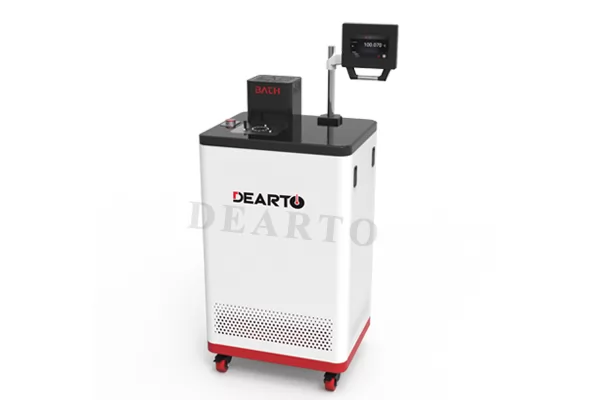
Low temperature calibration baths are essential tools in industries where precise temperature control is critical, such as pharmaceuticals, food processing, and scientific research. These baths ensure accurate calibration of temperature-sensitive instruments and play a crucial role in maintaining product quality and process efficiency.
In this comprehensive guide, we will explore the selection and usage of low temperature calibration baths, providing insights and recommendations for optimal performance.
1.Understanding Low Temperature Calibration Baths:
Low temperature calibration baths are specialized equipment designed to provide precise and stable temperature environments at temperatures below ambient levels, typically ranging from -80°C to room temperature. They employ advanced refrigeration systems and temperature control mechanisms to achieve and maintain low temperatures with high accuracy and stability.
2.Key Considerations for Selection:
When selecting a low temperature calibration bath, several factors should be taken into consideration:
►Temperature Range: Ensure that the bath can achieve the desired temperature range for your calibration needs, considering both the minimum and maximum temperatures required.
►Stability and Uniformity: Look for baths with excellent temperature stability and uniformity across the bath chamber to ensure consistent calibration results.
►Accuracy and Resolution: Consider the accuracy and resolution of temperature control and measurement capabilities, as precise temperature control is essential for reliable calibration.
►Capacity and Size: Choose a bath with sufficient capacity to accommodate the size and quantity of calibration samples, while also considering space constraints in your laboratory or workspace.
►Safety Features: Check for safety features such as overtemperature protection, alarms, and insulation to prevent accidents and ensure operator safety.
3.Best Practices for Usage:
To ensure optimal performance and longevity of a low temperature calibration bath, it is essential to follow best practices for usage:
►Proper Installation: Install the bath in a stable and well-ventilated environment, away from heat sources and direct sunlight.
►Regular Maintenance: Perform regular maintenance tasks such as cleaning, calibration checks, and inspection of refrigeration components to ensure optimal performance.
►Calibration Procedures: Follow manufacturer-recommended calibration procedures and use traceable reference standards to calibrate the bath accurately.
►Sample Handling: Handle calibration samples carefully to prevent contamination and ensure accurate calibration results.
►Safety Precautions: Adhere to safety protocols and guidelines when operating the bath, including wearing appropriate personal protective equipment (PPE) and avoiding contact with cold surfaces.
4.Applications in Various Industries:
Low temperature calibration baths find extensive applications across a range of industries, including:
►Pharmaceuticals: Used for calibrating temperature-sensitive equipment such as incubators, freezers, and refrigerators used in drug storage and research.
►Food Processing: Employed to calibrate temperature monitoring devices in food storage, processing, and transportation, ensuring compliance with safety and quality standards.
►Environmental Monitoring: Utilized for calibrating sensors and instruments used in environmental monitoring, such as weather stations, climate chambers, and cryogenic storage facilities.
►Scientific Research: Essential for calibrating laboratory equipment such as spectrophotometers, chromatographs, and thermal cyclers used in various scientific disciplines.
5.Calibration Standards and Compliance:
When calibrating temperature-sensitive instruments using low temperature calibration baths, it is essential to adhere to industry standards and regulatory requirements. Ensure that the calibration procedures follow guidelines outlined by organizations such as the International Organization for Standardization (ISO) or National Institute of Standards and Technology (NIST). Additionally, maintain records of calibration activities and traceability to reference standards to demonstrate compliance with regulatory standards and quality management systems.
6.Specialized Features and Options:
Some low temperature calibration baths may offer specialized features and options to cater to specific user requirements, including:
| Specialized Features and Options | |
|---|---|
| 1. | Dual-Chamber Design: Baths equipped with dual chambers allow simultaneous calibration of multiple samples at different temperatures, increasing efficiency and throughput. |
| 2. | Programmable Controls: Baths with programmable temperature profiles and ramp rates enable users to simulate real-world temperature conditions and conduct complex calibration procedures. |
| 3. | Data Logging and Connectivity: Baths equipped with data logging capabilities and connectivity options such as USB ports or Ethernet interfaces facilitate data storage, analysis, and remote monitoring. |
| 4. | Customization Options: Manufacturers may offer customization options such as customized chamber sizes, additional safety features, or compatibility with specific calibration standards to meet unique user needs. |
| 5. | Temperature Uniformity: Some low temperature calibration baths feature advanced temperature distribution systems to ensure uniform temperature across the entire bath chamber, minimizing temperature gradients and enhancing calibration accuracy. |
| 6. | External Circulation: Certain baths may offer options for external circulation, allowing users to connect external devices such as circulators or chillers to enhance temperature control and stability, especially for demanding applications or large sample sizes. |
7.Future Trends and Developments:
The field of low temperature calibration baths is continually evolving, driven by advancements in technology and emerging industry trends. Future developments may include:
►Integration with IoT and Automation: Increasing integration of low temperature calibration baths with Internet of Things (IoT) platforms and automation systems for remote monitoring, control, and data management.
►Enhanced Energy Efficiency: Development of energy-efficient refrigeration systems and temperature control algorithms to minimize power consumption and environmental impact.
►Expansion of Temperature Range: Exploration of new materials and refrigeration techniques to extend the temperature range of low temperature calibration baths, enabling calibration at ultra-low temperatures or elevated temperatures beyond traditional limits.
►Improved Accuracy and Stability: Continuous improvement in sensor technology, insulation materials, and temperature control mechanisms to enhance the accuracy, stability, and reliability of low temperature calibration baths, ensuring precise calibration results even in challenging environments.
8.Conclusion
By staying informed about these trends and developments, users can anticipate future requirements and make informed decisions when selecting and utilizing low temperature calibration baths in their applications.
If you have other questions, please contact us!



